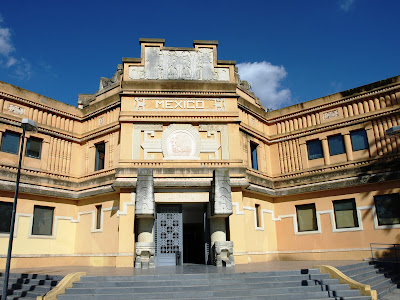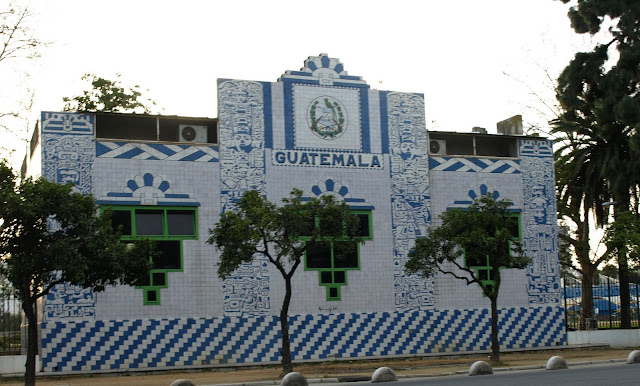Ya hemos comentado en multitud de ocasiones la cantidad de elementos artísticos, arquitectónicos, ecológicos y económicos que la Exposición iberoamericana de 1929 dejó en nuestra ciudad.
Uno de ellos fue este impresionante pabellón , el pabellón de México, que hoy día funciona como alberga la sede del Centro de Formación Permanente y los Secretariados de Doctorado y Master Universitario Oficial.
Este edificio, propiedad del Excmo. Ayuntamiento, fue cedido a la Universidad de Sevilla para uso universitario en 1995 y tras una escrupulosa e impecable restauración, se inauguró oficialmente tres años más tarde.
Este edificio, propiedad del Excmo. Ayuntamiento, fue cedido a la Universidad de Sevilla para uso universitario en 1995 y tras una escrupulosa e impecable restauración, se inauguró oficialmente tres años más tarde.
¿Qué podemos decir de su inequívoca estética?.
El arquitecto de el Pabellón de México para la Exposición Iberoamericana de 1929, Amabilis Domínguez, era un arquitecto Neocolonialista, que trabajo sobre todo en la península del Yucatán.
El planteamiento fue muy similar al Pabellón de Perú y Colombia, ambos exaltando el indigenismo a través de figuras y pinturas, en este caso de Leopoldo Tommasi y Víctor M. Reyes respectivamente.
El pabellón tiene una planta en forma de X y esta inspirado en los templos del grupo Sayil de la cultura maya-tolteca de Yucatán.
El Pabellón giraba entorno a gran vestíbulo central de donde partían los brazos de la X donde se encontraban los expositores.
Para aquellos que recuerden la Exposición universal de 1992, el Pabellón de México se distinguía por grandes X que formaban parte del conjunto arquitectónico.
Already we have commented in several occasions about the quantity of artistic, architectural, ecological and economic elements that the 1929 Latin-American Exhibition left in our city.
One of them was this impressive pavilion, the pavilion of Mexico, which today works since shelters the headquarters of the Center of Permanent training and the Secretariats of Doctorate and Official University Master.
This building, property of the Town hall was yielded to the University of Seville for university use in 1995 and after a scrupulous and impeccable restoration, was inaugurated officially three years later.
What can we say about this unequivocal aesthetics?.
The architect of the Pavilion of Mexico for the Latin-American Exhibition of 1929, Amabilis Domínguez, was an Newcolonial architect, that employed especially at the peninsula of the Yucatan.
The exposition was very similar to the Pavilion of Peru and Colombia, both exalting the indigenism across figures and paintings, in this case of Leopoldo Tommasi and Víctor M. Reyes respectively.
The pavilion has a plant in the shape of X and this one was inspired by the temples of the group Sayil of the culture Maya-tolteca of Yucatan.
The Pavilion was turning environment to a great central foyer wherefrom were divided the arms of the X where the exhibitors were.
For who remember the 1992 Universal Exhibition, the Pavilion of Mexico was distinguishing for two big X that were forming a part of the architectural set (down photo).




